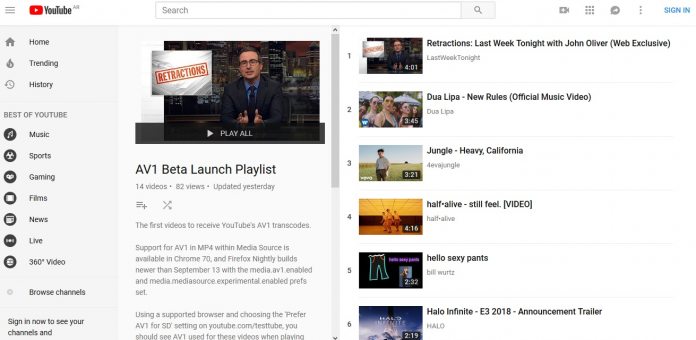YouTube says the support is currently in an experimental state. However, the company is embracing AV1 early to ensure it is prepared for when web browser add support. That is expected to happen any time between now and 2020. Importantly, AV1 is likely to become a standardized format, so companies are working to embrace it. YouTube is preparing its videos to work with the coding ahead of widespread support. A playlist is available on the YouTube Developers account that showcases the first videos transcoded in AV1. For users, there are limitations for viewing videos in AV1. For example, users will need to be running Chrome 70 or Firefox Nightly (Sept. 13 or newer). Additionally, the media.av1.enabled and media.mediasource.experimental.enabled preferences must be set. AV1 videos on YouTube run with 480p resolution or lower, with VP9 taking over for higher resolutions. Again, this is just an experimental phase.
Short Wait
Naturally, some users will not be interested in jumping on board AV1 this early. Still, the transition is underway, so all users will be using the coding eventually. Indeed, the three main web browser companies (Google, Mozilla, and Microsoft) are part of AOMedia. With that in mind, expect Google Chrome, Mozilla Firefox, and Microsoft Edge to add AV1 support during 2019 or 2020. As for YouTube, it says it has a commitment to adopt AV1 in an “ambitious” roll out.




